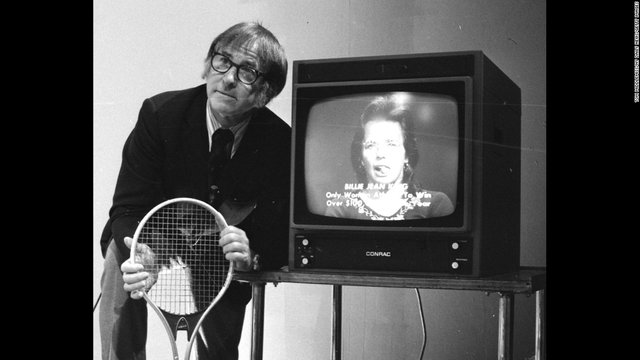a ykemon ttha serda - (I know you got that right) why? - (Part 2, final)
After a dozen hours of sleep and some vegetables as sole food, I am up and running again!
Lets continue the article: a ykemon ttha srda - (I know you got that right) why?
I'm really hyped today.
Besides the mentioned differences, there's the matter of size and location of these cells: cones are smaller and are located -sort of- around the center of the retina, while, the canes are larger and are more concentrated around the peripheral areas.
So, we've a large amount of photo-sensitivity that detect color and few on the periphery that do not. The outcome is that the only things that we see full color HD is what is right in the center of our field of vision. The rest, we see it like a 1950 TV transmission, where we can barely know what we are seeing.

Just in case you didn't know, TV performers back then had to use high contrast makeup to draw up their faces, so that they'd be visible on the screen, yes, they used
black and white makeup!
This may sound weird to some, because personal experience dictates otherwise (for SOME!).
Esperience tells us that as you read this while using the public transport you can perfectly see that hot blonde chick with the corner of your eye; and that she's (obviously) looking at you.
Ok, get a hold of your brain, and kiss him hard, thank him for what he gives to you because: He is lying to you, it fools itself. But, before that, thank him for knowing what is really going on, and masking the real data for the sake of your sanity.
Basically, your brain rebuilds the information receive by your eyes, filling in the gaps with "guesses" he can do over the poor quality input he's getting. The good thing about these brain inferences (google that term, you'd be amazed), is that generally speaking, they are great. Yeah, they may have a few mishaps from time to time, making us believe that that woman was looking at us while she actually was looking at the buffed up guy that was standing next to us... But, if all out of nowhere a hungry tiger hopped into the bus (aka: this time something REALLY wants to eat you, literally), we will be able to detect that before even "looking" at it.
Fun fact, as I was typing the above sentence, a steemit notification telling me that @steemitqa mentioned me popped up, and I read it with my peripheral vision... Which brings me back to topic!
Ok, back to "reading" and moving our eyes a lot. Now we know that to recognize a word it is imperative that we look at it with the center of our retina (what is called the "fovea centralis"). We also know that every time that we stop over a word we stay there for around 200 milliseconds, but, the interesting part is that we do not stay for that time at all the words. That time varies from word to word. Even better, if you read the same word two times in the same text, the time is shorter than the first time.
In 1967, Yarbus published a book where he proposed that during the visual recognition of an image, the movements of the eyes varied depending on the instructions given to the subject.
He observed that placing the a person in front of a painting that portrayed a daily life scene and asking him about the age of the people in the picture, the subject (that is how we usually call the friends that willingly participate in our experiments) moved the eyes focusing in the portrayed people's faces. While, when inquiring about their social status, the eye movement pattern was a different one, looking at the clothing and furniture.
During the 80s, Just and Carpenter (probably with a fluffy hair, while listening Poison) proposed that during the reading process our eyes will glance words, focusing on them a determinate amount of time, and that this time depends on the processing our brain performs over it.
This is, the brain instructs the eyes: "DO NOT MOVE! I'M NOT DONE YET!!!".
This was divided into two theories: The eye-mind (the eye responds to what the mind instructs) and the immediate cognitive processing (each word is processed as it is read). You can figure that since 1980 a lot of things changed: The methods we use to register eye movements are much better; computers analyze data a lot better and we've thousands of time the data to work with, giving us better statistical charts. Regardless of that Just and Carpenter's works are still the base we work over, whenever we talk about this topic.

Average shitposter, attemting to read my frikking "too long" articles
The good thing, today, is that to attempt to understand what do we do when we read (better said: what does our brain do), we walk people into the lab, sit them in a comfy chair, make them lay their head in a fixed structure in front of a screen with a special camera: an eye-tracker. This camera is a little different from our eyes, it sees the light we do not, particularly the infrared spectrum. This is of key importance, because for us to get good data, we need a lot of light striking the subject's face, and it is not nice to torture a subject for an hour, forcing him/her to read with a high powered light beating the shit out of those retinas (science is not a KGB interrogatory).
Reading the results we can see that longer words create longer focus times (this time goes down as we become more experienced reading, mostly). This can be because a longer word has more information that needs to be extracted from it. For the contrary, words that we are used to read, always have a shorter focus time. This is because our brain thesaurus has them in "high" priority in the index (like a dictionary, but instead of being organized alphabetically, we've it organized by frequency of use). Again, if a word is repeated several times within a text, the focus time diminishes as we see it again. This, you may have noticed if you read the first part of the article; now, you do not mentally stutter while reading "otorhinolaryngologist". The listing updates "live" depending on what we are reading.
Now, there's another fact that is my personal favorite: Predictability.
This is, how probable it is for us to "know" what will the next word be in a text, without even having looked at it. You know, that thing your phone does (or, mostly, doesn't).

By analyzing this variable you can see that if the word that you're reading is too predictalbe you will not process the full word to know what it is... As you hopefully just did with "predictable" ↑... Your brain just skipped half of the word, not checking, because you knew what the next word was. In words that are unexpected, you'll stay there for longer *, to "double-check". Up for the challenge?
para-Dimethylaminobenzaldehyde*Does not apply for chemists. Or German people.
All these "reading" things are frikking interesting, and tell us a LOT about how our brain works, but, as I mentioned many times whenever talking about sciences: This has a LOT more to come. We still do not know a lot about predictability... What will I write about next?
Bring on the big words. Lay off the chocolate. And teach the world that what they see is not what is.
We live under a huge illusion of reality that our brains forge just for us :o